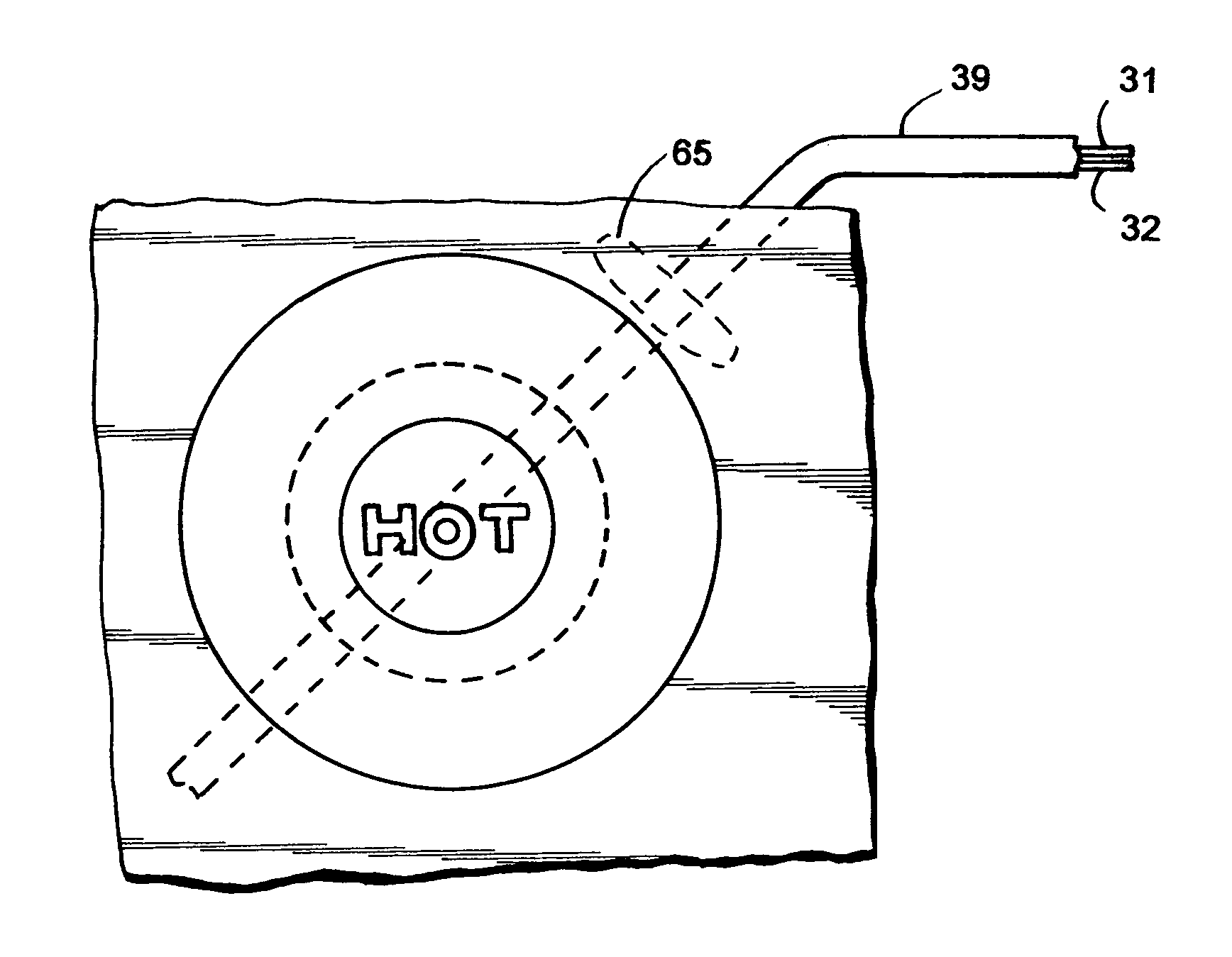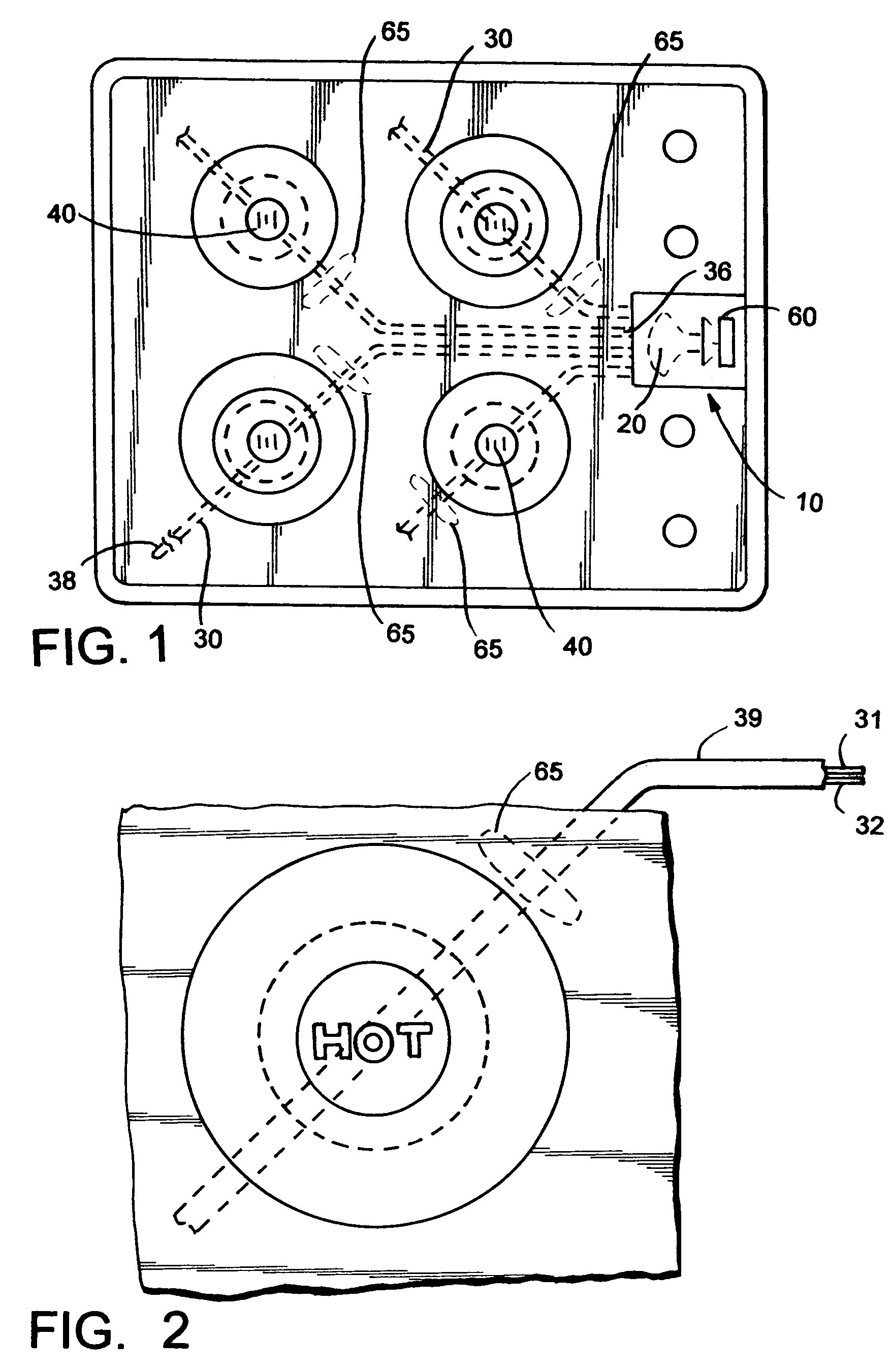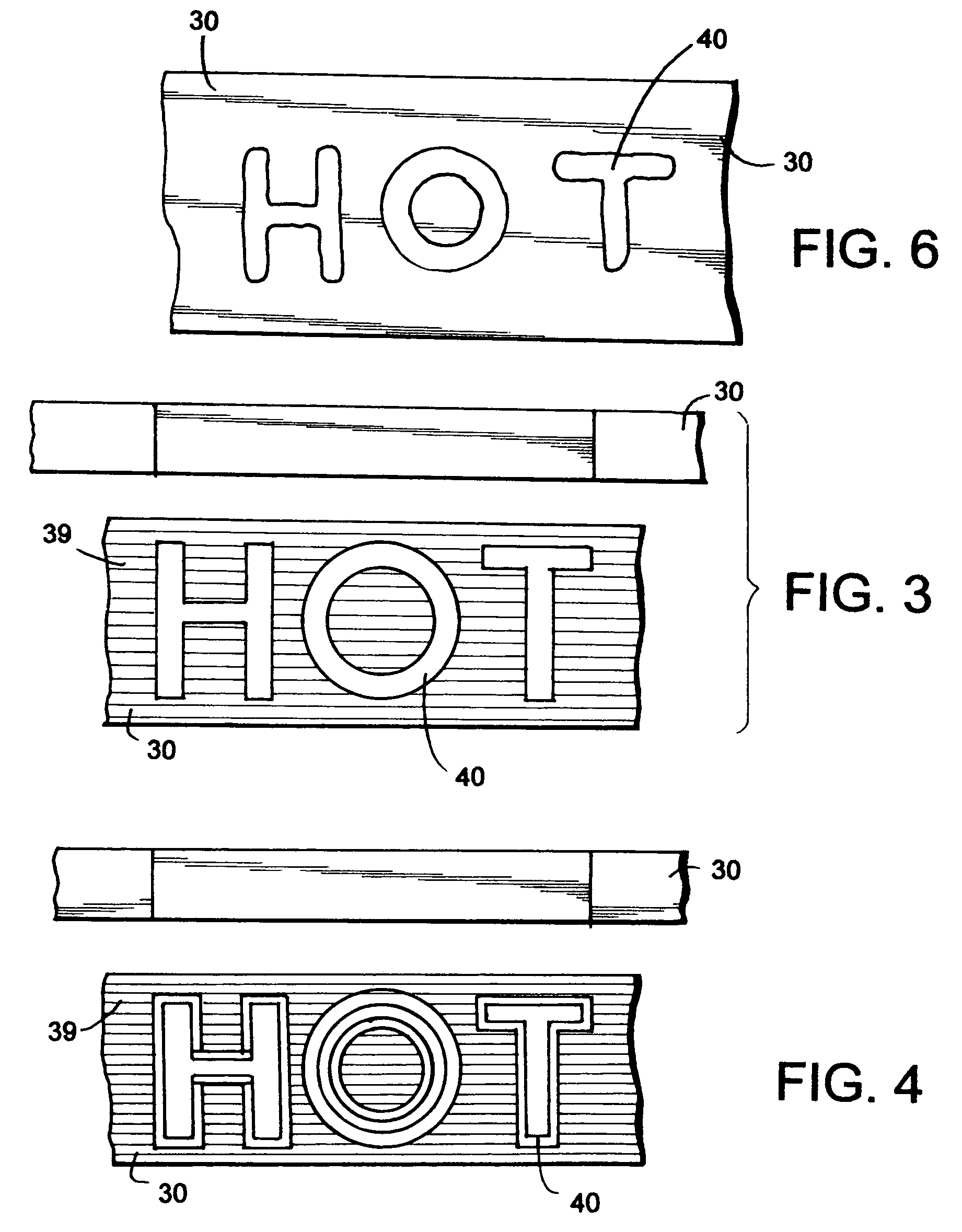Heat warning safety device using fiber optic cables
a safety device and fiber optic cable technology, applied in the direction of ohmic-resistance heating, fibre light guides, electrical appliances, etc., can solve the problems of affecting the safety of users, and being unable to detect the heating element of the stove remains hot, etc., to achieve the effect of maximizing the warning impa
- Summary
- Abstract
- Description
- Claims
- Application Information
AI Technical Summary
Benefits of technology
Problems solved by technology
Method used
Image
Examples
Embodiment Construction
[0072]The apparatus of the present invention will now be illustrated by reference to the accompanying drawings. The device of the present invention has been assigned reference numeral 10 Other elements have been assigned the reference numerals referred to below.
[0073]As seen from FIGS. 1–11, a heat alert safety device for warning individuals that a surface on an object is dangerously hot is presented. The device 10 includes a light source 20 that generates a light beam and includes a light guide. As shown in the drawings herein, the light guide is in the form of a fiber optic cable 30 formed of a plurality of fibers 31, 32, 33, 34, 45 etc. that is connected at a first end 36 of the fiber optic cable 30 to the light source 20 and oriented so that the plurality of fibers 31, 32, 33, 34, 35, etc. are directly in a path of the light beam. The fiber optic cable 30 transmits the light beam from the light source 20 beginning from the first end 36 of the fiber optic cable 30 to the second e...
PUM
 Login to View More
Login to View More Abstract
Description
Claims
Application Information
 Login to View More
Login to View More - R&D
- Intellectual Property
- Life Sciences
- Materials
- Tech Scout
- Unparalleled Data Quality
- Higher Quality Content
- 60% Fewer Hallucinations
Browse by: Latest US Patents, China's latest patents, Technical Efficacy Thesaurus, Application Domain, Technology Topic, Popular Technical Reports.
© 2025 PatSnap. All rights reserved.Legal|Privacy policy|Modern Slavery Act Transparency Statement|Sitemap|About US| Contact US: help@patsnap.com



